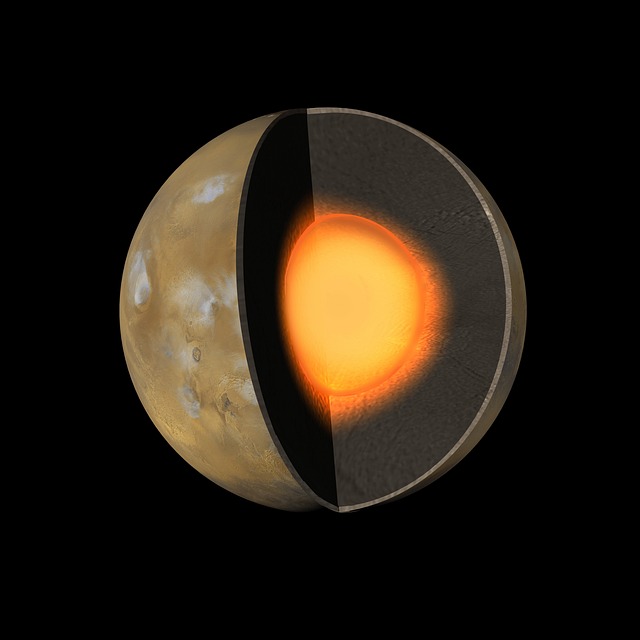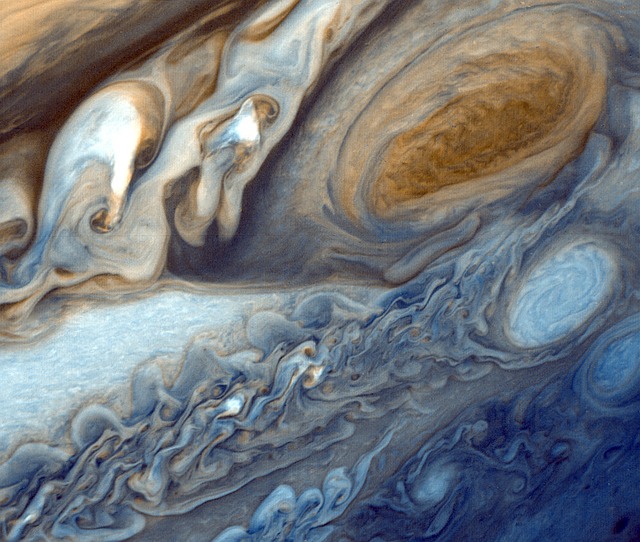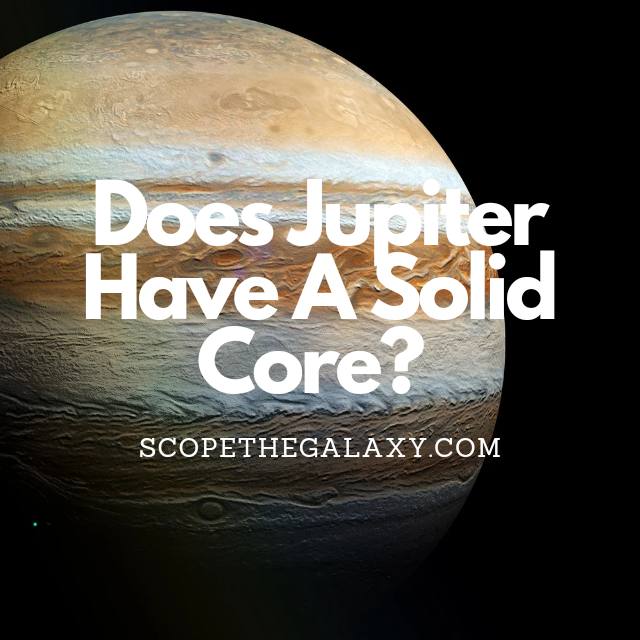*This post may contain affiliate links. This means we may make a commission if you purchase an item using one of our links*
Jupiter is the largest planet in our solar system and has long been a source of fascination for scientists. But what lies beneath its thick clouds? Does Jupiter have a solid core, or is it made up of gas and liquid? The general consensus would lead us to believe that a solid core does exist in the center of Jupiter however, the answer is not yet verified.
That’s why in this article, we’ll explore the evidence for and against the existence of a solid core inside Jupiter. We’ll look at the various theories proposed to explain why scientists think there might be one and what kind of materials would make up such a core. Finally, we’ll explore whether or not a planet can exist with no core at all.
Why Does Jupiter Have A Solid Core?
Table of Contents

Planets form when a collection of rock, metal, and ice is pulled together by gravity. This process begins when nearby debris is drawn to the center of a dense core. As more material accumulates around the core, it gets bigger and denser, eventually forming a planet.
The planet’s temperature also increases as more material is added, causing the planet to become more solidified over time. Eventually, the planet reaches its final form, though it continues to accumulate material from its surroundings.
Jupiter comprises various elements and compounds, with a core consisting primarily of iron, silicates, and hydrogen. Scientists have studied the composition of Jupiter’s core extensively using data from spacecraft flybys and ground-based observations. We can gain insight into its formation, history, and evolution by studying its composition.
Scientific knowledge leads us to believe that Jupiter’s core is solid because it would have needed to gather enough mass to attract its high percentage of gasses from the early solar system. Still, that doesn’t necessarily mean that the core is solid today. High temperatures could mix metallic hydrogen in the center and transport it to higher levels of the planet.
Do All Gas Giants Have Solid Cores?

Scientists suspect all known gas giants, such as Jupiter, Saturn, and Uranus, have solid cores. However, there is no way to know for sure because we don’t currently possess any equipment that is robust enough to travel deep inside these planets.
We suspect that the core of a planet is solid because of the intense pressure and heat that it experiences from the planet’s gravity. This pressure and heat cause the materials inside the core to become extremely dense, forming a solid mass that is resistant to change.
This solid core is essential for the planet’s stability, as it helps to keep its outer layers in place and prevents them from being torn apart by gravitational forces. The solid core also plays an essential role in planetary evolution, as it allows for specific chemical reactions necessary for life on the surface of a planet.
Could You Stand On Jupiter’s Core?

Standing on Jupiter is impossible for humans due to the planet’s immense gravity and lack of a solid surface. However, the extreme conditions of Jupiter have been studied by scientists and engineers who have created robots and probes that can explore its atmosphere and provide us with valuable information about this distant world.
With the help of these robotic explorers, we can gain a better understanding of Jupiter’s environment, which could lead to new discoveries in space exploration.
If you tried to stand on Jupiter, you would be killed instantly by a lack of oxygen combined with extreme temperatures and pressure. Even if you could find a way to overcome these obstacles, this distant land would be challenging to navigate.
To stand on Jupiter’s core, you would first need to navigate its thick atmosphere and liquid hydrogen oceans. Sinking through each of these layers would seem like an endless fall as the temperatures and pressure rapidly increased all around you.
Just 500 km into the atmosphere, your visibility would be all but gone as giant ammonia clouds whipped around you at up to 100 m/s. Reaching the hydrogen ocean, you’d find yourself “swimming” in a supercritical fluid with a consistency somewhere between a liquid and a gas.
With current technology, there is no way for a probe to make it to the core of Jupiter, let alone a human. But if you did somehow find your way to the hot center of Jupiter, you’d be trapped here for eternity, thanks to the immense pressure surrounding you.
Can Planets Have No Core?
Scientists have never discovered a coreless planet, though theoretical models suggest it could be possible somewhere in the distant galaxy. These “coreless” planets would lack metallic elements at their center, meaning they wouldn’t have a magnetic field.
A 2008 paper by Sara Seager and Linda Elkins-Tanton suggested two ways this type of planet could form.
The first involves a planet forming in a cooler region away from its central star, where the mass accretes “chondrite-like” materials rich in oxidized water. In this instance, all metallic iron could bind into silicate mineral crystals.
The second theory involves a planet gathering water-rich and iron-rich materials where the iron reacts with the water and forms iron oxide to release hydrogen before the metal core has developed. In this theory, the oxidized iron could remain trapped in the planet’s mantle, thereby preventing it from forming a core.
Summary
We need to develop a space probe resilient enough to travel to the center of Jupiter to conclusively say whether or not the planet has a solid core. However, current scientific understanding suggests this is the most likely possibility (at least once upon a time).
When planets form, they gather heavy elements at their center to establish the mass required for sufficient gravitational pull. Without this central mass, there is no way Jupiter could have attracted the high volume of gases that it contains in its atmosphere today.
Still, these high temperatures mean that what was once a solid core could well have been diluted by today with a molten mix of metallic hydrogen rising through the layers of this distant planet.
References
What Would Happen If You Tried To Stand On Jupiter? | IFLScience
What’s In Jupiter’s Core? – Mission Juno (swri.edu)
Jupiter’s Core – Universe Today
Coreless planet – Wikipedia

